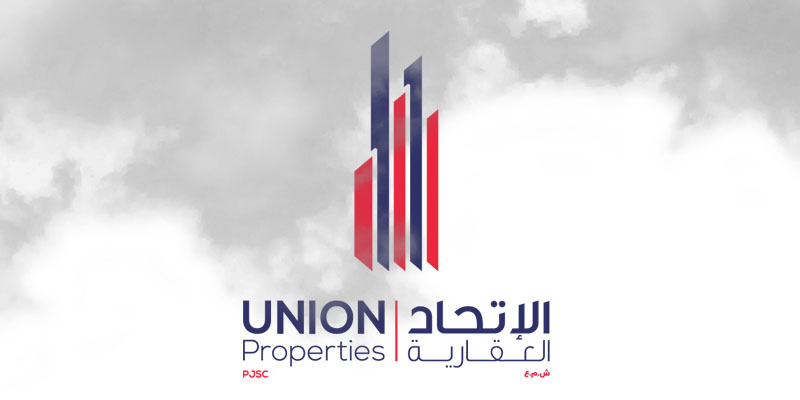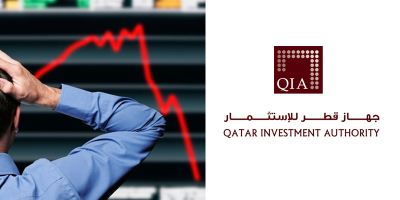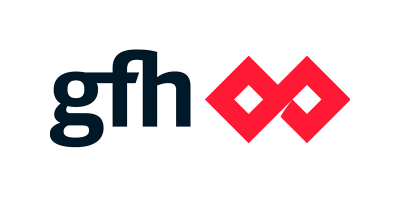Union Properties (UP) began in 1993 with a focus on investing in and developing real estate in the UAE.
Two of UP’s high-profile projects were Dubai’s Motor City master development and the Foster + Partners designed Index Tower, completed in 2010 (now partially owned by EmiratesREIT).
UP has a history of struggling with its core business of real estate development. As per Wikipedia:
Apart from Dubai Autodrome which was opened in 2004 the remaining developments within MotorCity were due to be completed in 2009. However, in February 2009 Union Properties announced that the F1-X theme park would be put on hold and delayed due to the global financial crisis and problems with obtaining credit. … Since the Global Financial Crisis decimated Dubai’s economy in late 2008 work on some aspects of the project has completely ground to a halt, leaving the Marriott Hotel and The F1-X Theme Park half built.
Problems continued to plague the firm well after the financial crisis. In 2016 the developer massively under-performed its peers.
UP recently announced it was seeking to help support its stock price through buy backs. This is usually an indicator that management sees greater value in their current, existing business (that the market is overlooking) than in any new, other business they could take on. We decided to take a look at UP’s current state of affairs.
Full Year 2018 Performance
UP’s 2018 financial statements reveal revenues of AED 501mn v 485mn in 2017, or 3% growth yoy. Annual Net Income showed a large loss of AED 2.375bn in 2017, which swung to 62mn profit in 2018. Comprehensive income, which is Net Income plus other items such as unrealized gains swung to a material 452mn in 2018.
The casual investor may be led to believe UP had finally turned the corner; they would be wrong.
Several items on the 2018 income statement are worthy of attention, giving investors a rather different assessment of the quality of UP’s earnings.
- Gain on disposal of a joint venture: UP reported AED 125mn gains on disposing its 50% stake in Emicool, a Dubai-based district cooling business, for a total of AED 500mn. This was a one-time, non-recurring item. Emicool was a profitable, stable business. Selling it reduces recurring income for UP going forward.
- Gain/loss on valuation of properties: UP reported AED 86mn gains. The accompanying Note 9 revealed that these gains were from the result of a defaulted property purchaser, which resulted in a movement from the receivables account to the investment properties account. Valuation gains are non-cash items and subjective.
- Other income: AED 90mn of which was attributable to “reversals of liabilities” which were described as “mainly related to payables and accruals in relation to completed projects, for which management assessed that no settlement will be required against”. These were again, one-time non-cash items.
- Other comprehensive income: this was the second largest line item on the income statement after revenues from customers and amounted to AED 390mn. The accompanying Note 8 below showed that this was entirely from the revaluation of land (emphasis ours).
The fair value of the land was determined using a valuation methodology based on a discounted cash flow model, as there is a lack of comparable market data due to the nature of the property. The valuation at 31 December 2018 was carried by independent valuers with specific valuation experience for similar properties based on assumptions prepared by management and validated by the external valuer. Significant unobservable inputs have been used in estimating the fair value of the property including cash flow projections, future capital expenditures, discount rate and growth rate. A net gain from the revaluation of the land of AED 390 million in 2018 was recognized in OCI, representing a level 3 revaluation gain.
Significant increases (decreases) in the significant unobservable inputs would result in a significantly higher (lower) fair value.
Why did UP management decide at this particular point in time to change the valuation method of its sizeable land bank? This action was not required by the newly adopted IFRS 9 accounting standard; UP explicitly stated this below.
The classification and measurement requirements of IFRS 9 did not have a significant impact on the Group. The Group continued measuring at fair value all financial assets previously held at fair value under IAS 39.
In which case it suggests the decision to revalue its land bank was a business decision, not a regulatory one.
Three of the Four income statement entries above amounting to over AED 500mn are non-cash items. As we know from Abraaj’s experience, non-cash book entries cannot keep you in business forever.
Adjusting The Numbers
Stripping out the above one-time and non-cash items UP appears in a very different light. Net Income for 2018 falls from AED 452mn to (-149)mn.
Cash flow isn’t a better story either. UP saw losses across operating, investing and financing activities totaling AED (-177)mn in 2018.
UP’s segment reporting gives a clearer picture of the operating performance of its various business lines. Contracting, Real estate, Goods & Services are its main revenue lines accounting for AED 75mn, 131mn and 295mn respectively. However these segments have high associated direct costs. Contracting posted a net loss of AED 41mn, Real estate a net loss of 18mn whilst Goods & Services generated a 28mn profit; in total a 31mn loss.
As a comparison, bank loan interest payments alone in 2018 were AED 83mn. As we know, banks typically don’t like it when they aren’t paid on time.
Back to Buy backs
Management usually decides to buy back its own stock from the market when its divergence from fair value is so extreme that a convergence to fair value would result in a higher gain than if they were to invest the cash in their core business.
Simply said, the prospective return from buying one’s own shares is more attractive (given the undervaluation) than the fundamentals of the businesses itself.
There is no doubt that UP’s business fundamentals are currently unattractive. UP itself shares a negative outlook for its core business below.
Considering the expected significant increase in the new supply of plots of land in and around the land bank of the Company together with the already existing undeveloped plots of land in existing communities, the independent valuer and management believe this is resulting in increased competition and downward pricing pressures particularly for plots of land. Furthermore, increased property developments in and around the land bank of the Company that are being completed for delivery in the end user property market, have resulted into more competition and reduced prices for developed properties as well as land prices.
The risk with purchasing its own shares is that this uses up cash, something that UP doesn’t have a lot of. UP is in fact heavily leveraged and its precious cash should be reserved for servicing its debts.
Solvency Risk
UP faces liquidity challenges.
UP’s cash and equivalents balance dropped from AED 130mn to 97mn in 2018. Its total interest rate risk liabilities grew by 14% from AED 1.56bn to 1.78bn in 2018. These were a combination of overdrafts and bank loans.
Overdrafts grew by a factor greater than 3X from AED 51mn to 177mn. The company’s bank loan balance increased from AED 1.51bn to 1.54bn at the end of 2018. Most of the bank loans were relatively short-term, amortizing and with bullet payments in their final years. It appears that a loan with remaining balance AED 478mn originally due in 2022 recently breached its covenants, causing it to become a current liability. Interest costs grew from AED 65mn to 83mn over the year as interest rates increased.
The bank loans are secured against mortgages of lands and properties with a fair value of AED 2.41bn, suggesting significant overcollateralization. UP has no bonds or sukuk outstanding. Shareholders at the recent AGM gave a 12 month extension to a resolution passed last year allowing the company to issue up to AED 1bn of Islamic bonds. The lack of any tangible progress on this matter over 2018 and so far in 2019 is notable.
Under E&Y’s key audit matters (page 8) they reference AED 1.21bn of obligations being due in 2019. Given the weak operating environment, and the poor historical performance, UP faces material refinancing risk.
Egypt and Palm Hills
Not content with the UAE, UP embarked on a quest for international diversification in 2017.
Note 11 of the financial statements shows UP increasing its investment in publicly listed Egyptian developer Palm Hills Development. UP grew its stake from 4.9% in 2017 to 17.59% by mid 2018.
the Group through its investment arm made a strategic investment in Palm Hills Development in 2017 and 2018, involved in investment in and development of properties and property related activities in Egypt.
If a developer is struggling to operate in its home country, does it make sense to attempt to expand into a new market via a non-controlling investment into a public company? Futhermore, if shareholders of UP want Egypt exposure, they can buy shares in Palm Hills directly.
The investment was also ill-timed.
In H1 2018 when UP increased its stake, Palm Hills was trading above EGP 4 per share. By the end of the year it had fallen to around EGP 2.2, a (-45)% fall over 6 months.
In Q4 of 2018, UP then sold a portion of its stake, some 22.3mn shares. This was just months after increasing the stake. Buying high and selling low is not a good investment strategy.
To add insult to injury, in October 2018 Palm Hills came out with a capital increase, selling around 770mn new shares to the public. UP did not participate in the rights issue and hence got diluted by around 33%.
The Q3 2018 action reclassifying the investment from ‘investment at fair value through profit or loss’ into an ‘investment in associate’ also raises eyebrows. Reclassifying Palm Hills to an investment in an associate from July 2018 allowed UP to avoid reporting mark to market losses and the dilution through its income statement.
Shareholders should ask UP management the following:
- Why expand into Egypt, when operating successfully in the UAE has proven challenging itself?
- Does the Palm Hills investment and immediate sale and dilution really reflect a committed and strategic long term decision to enter Egypt?
- Did UP management know about the upcoming Palm Hills capital raise at the time of their earlier investments and their board appointments?
Conclusion
It appears UP is facing the perfect storm, a weak real estate market, significant short-term debt financing coming due and a limited ability to service interest costs with minimal recurring revenues.
The operating performance of UP is significantly weaker that of its larger developer peers, Damac and Emaar, bringing into question its competency as a developer.
Management’s recent focus on its share price in announcing a stock buy back is somewhat disconcerting. Management’s focus should be on streamlining its operations, improving margins, its solvency and holding onto precious liquidity – not tinkering with its share price.
To add insult to injury, and in spite of the bad performance detailed above, it didn’t stop salaries and employee benefits jumping 18% year on year from AED 15.9mn to AED 18.8mn in 2018.
It’s no comfort that UP also changed its auditor between 2017 and 2018, from KPMG to EY. Non-cash revaluation gains were the main reason UP didn’t post another massive loss for 2018. With that in mind, we leave you with the following comment from EY, the new auditor:
As disclosed in note 8.2 to the consolidated financial statements, a revaluation was undertaken by an independent valuer (the “Valuer”), which resulted in a revaluation gain of AED 390 million reflected in equity at year-end. We were provided with the valuation report and access to the Valuer but were not able to obtain sufficient observable data to support some of the assumptions made regarding future cash flows.
As a result of this matter, we were unable to determine whether any adjustments were necessary to the carrying amount of the property, plant and equipment as at 31 December 2018 and the revaluation gain recognized during the year then ended in other comprehensive income and the revaluation reserve.
If you would like to write for Baizat.net we are accepting work from contributing writers. Get in touch via twitter or email: baizat (at) protonmail.com





Khalid
Great insightful article. Credit to the analysts.